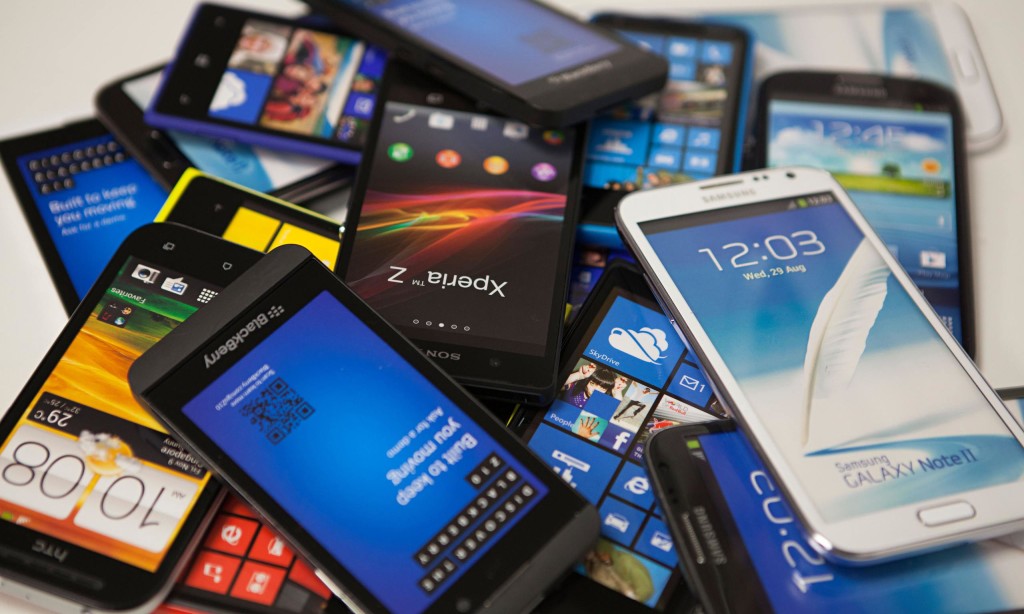The smartphone in your pocket is more powerful than the computers that sent astronauts to the moon. Yet somehow, we still find ourselves frustrated when it takes three seconds to load a video. The relationship we have with mobile technology has evolved dramatically over the past decade, transforming not just how we communicate, but how we work, learn, entertain ourselves, and navigate the world around us.
What’s particularly fascinating about this evolution isn’t just the hardware improvements—though those are impressive—but how the entire ecosystem of mobile connectivity has adapted to support our increasingly digital lifestyles. From the devices we carry to the networks that power them and the plans that keep us connected, every element has undergone a transformation that would have seemed like science fiction just fifteen years ago.
This shift has created both opportunities and challenges. We’re more connected than ever, yet we’re also more dependent on that connectivity. Understanding the current landscape of mobile technology, from cutting-edge devices to flexible connectivity solutions, isn’t just about staying trendy—it’s about making informed decisions that can genuinely improve your daily life and potentially save you money in the process.
The Powerhouse in Your Pocket: Today’s Flagship Smartphones
The smartphone market has reached a point where the differences between generations might seem incremental on paper, but they’re transformative in practice. Take the latest flagship devices, for instance. They’re not just about faster processors or better cameras anymore—though both of those have improved tremendously. Modern smartphones are sophisticated computational photography machines, augmented reality platforms, and professional-grade video production studios that happen to make phone calls.
The iPhone 16 Pro represents a perfect example of this holistic evolution. Apple’s latest flagship pushes boundaries in several meaningful ways that actually impact daily use rather than just looking good in a spec sheet. The camera system now captures spatial video, preparing users for the next wave of immersive content consumption. The A18 Pro chip doesn’t just benchmark well—it enables features like real-time language translation and advanced computational photography that were impossible just a generation ago.
But here’s what often gets overlooked in tech reviews: the real value of a flagship smartphone isn’t apparent on day one. It reveals itself over the two or three years you’ll likely keep the device. The performance headroom means apps remain snappy. The camera quality means memories captured today will still look sharp when you revisit them years from now. The build quality means the device will actually survive those years of daily use.
For those in Singapore looking to upgrade to premium devices without the upfront cost shock, carriers have evolved their offerings considerably. M1 has structured their promotions to make flagship devices more accessible, often bundling attractive data plans with device payment schemes that spread the cost over 24 or 36 months. This approach transforms a substantial one-time expense into a manageable monthly commitment, while ensuring you’re not stuck with outdated connectivity plans that made sense in 2020 but feel restrictive now.
The psychology of smartphone upgrades has shifted too. We’re past the era where every new release felt revolutionary. Today’s upgrade cycle is more measured, more practical. People upgrade when their current device genuinely can’t keep up anymore, or when a specific new feature addresses a real pain point in their daily routine. This more mature market has forced manufacturers to offer genuine value rather than marginal improvements dressed up in marketing speak.

Rethinking Connectivity: The SIM-Only Revolution
While we obsess over hardware specs, there’s been a quieter revolution happening in how we pay for mobile connectivity. The traditional bundled contract—where you got a “free” phone in exchange for committing to an expensive two-year plan—is giving way to more flexible, transparent models that often make better financial sense.
SIM-only plans represent this new philosophy. Instead of subsidizing device costs through inflated monthly fees, these plans unbundle connectivity from hardware. You bring your own device—whether purchased outright, bought on a separate payment plan, or simply your existing phone—and you pay only for the service you actually use. For many users, especially those who don’t feel the need to upgrade every year, this approach can save hundreds of dollars over time.
The beauty of this model becomes especially apparent when you look at actual usage patterns. Most people overestimate their data needs dramatically. We’ve been conditioned to fear overage charges, so we opt for unlimited plans “just in case,” even though analytics consistently show that the average smartphone user consumes between 5-10GB of monthly data. That “just in case” buffer costs money you could be saving or spending on things you actually value.
For frequent travelers or anyone with international connections, the calculus becomes even more interesting. Traditional plans often treat international connectivity as a premium add-on, charging premium rates for what’s becoming an increasingly common need. Modern alternatives recognize that mobility—literal, geographical mobility—is part of the lifestyle now, not an exception requiring special accommodation.
Maxx has carved out an interesting niche in this space with their IDD SIM-only offerings, which acknowledge that making international calls shouldn’t require a second mortgage. Their approach treats international direct dialing as a standard feature rather than a luxury surcharge, which makes practical sense in our globalized economy where you might need to call colleagues in different countries or stay in touch with family abroad without monitoring every minute.
The flexibility extends beyond just international calls. SIM-only plans typically offer month-to-month terms, meaning you’re not locked into multi-year commitments that made sense when you signed but feel restrictive eighteen months later when your needs have changed. Changed jobs and now work from home with constant Wi-Fi? You can downgrade. Started a side business that requires more mobile data? You can upgrade without penalty or waiting for a contract to expire.
This flexibility also provides a safety net for life’s unpredictable moments. Lost your job and need to tighten the budget? You can scale back your plan immediately rather than being trapped in a contract. Got a promotion that requires more travel? You can adjust your plan to match without navigating complex upgrade procedures or paying early termination fees.

The 5G Reality: Beyond the Hype
Remember when 5G was supposed to change everything overnight? The marketing suggested we’d be downloading full movies in seconds and experiencing lag-free everything, everywhere. The reality, as with most technology rollouts, has been more nuanced and more interesting than the hype suggested.
5G is genuinely transformative, but not in the ways the initial advertising implied. Yes, peak speeds are dramatically faster than 4G, but that’s not actually the killer feature for most users. The real benefits lie in capacity and latency. In crowded areas—think concerts, sporting events, busy urban centers—5G networks handle congestion far more gracefully than their predecessors. You’re not competing for bandwidth with thousands of other people in the same way you were on 4G.
The latency improvements matter more than you might think. That reduction from 50 milliseconds to 10 milliseconds doesn’t sound significant, but it’s the difference between video calls that feel natural and video calls that feel awkward and stilted. It’s the difference between mobile gaming that’s responsive and mobile gaming that’s frustrating. These seemingly small improvements accumulate into a noticeably better user experience.
But here’s the catch: 5G coverage remains uneven, even in markets with relatively mature deployments. You might get exceptional service in the city center and drop back to 4G in certain neighborhoods or buildings. This reality makes choosing both devices and plans more complex. Do you pay extra for 5G capabilities you might not consistently access? The answer depends entirely on where you actually spend your time.
The power consumption issue also deserves mention. 5G radios draw more power than 4G, which impacts battery life in ways that manufacturers are still optimizing. This is why you’ll sometimes see your phone intelligently switch between 4G and 5G based on what you’re doing—it’s not a bug, it’s a feature designed to balance performance with battery longevity.

Practical Wisdom: Making Smart Choices in a Complex Market
With all these options and considerations, how do you actually make smart decisions about mobile technology? The key is cutting through both the marketing noise and the online discourse to focus on what actually matters for your specific situation.
Start by honestly auditing your current usage. Most smartphones have built-in analytics that show exactly how much data you consume, which apps you actually use, and how you spend your screen time. This data is invaluable for right-sizing your plan. If you’re consistently using only 8GB of your 50GB allowance, you’re probably overpaying significantly.
Consider the total cost of ownership over the device’s lifecycle. A cheaper phone might seem economical initially, but if you need to replace it in eighteen months instead of three years, you haven’t saved money—you’ve spent more while dealing with the hassle of more frequent upgrades. Conversely, the most expensive flagship might be overkill for your needs. Be honest about which features you’ll actually use versus which simply sound cool.
Think about your connectivity needs holistically. Do you frequently travel internationally? Do you make voice calls regularly or primarily text and use data? Do you need lots of hotspot capability for other devices? Your answers should shape your plan choice, not just your device choice.

Looking Forward: The Next Wave of Mobile Innovation
The mobile technology landscape continues evolving rapidly, though perhaps less obviously than in the early smartphone era. Foldable devices have moved from experimental curiosities to genuine alternatives for certain use cases. Artificial intelligence capabilities are increasingly embedded at the device level rather than requiring cloud connectivity. Battery technology slowly but steadily improves.
What’s most exciting isn’t any single innovation but how these technologies combine to enable new possibilities. Better cameras plus AI processing equals computational photography that rivals professional equipment. Improved battery life plus efficient 5G plus remote work tools equals genuine freedom to work from anywhere. Enhanced displays plus processing power plus AR capabilities equals practical augmented reality applications that actually enhance daily life rather than feeling like gimmicks.
The pricing landscape will likely continue fragmenting and evolving. We’re seeing more device manufacturers offer their own financing. More carriers experimenting with different bundle models. More third-party retailers are finding innovative ways to make technology accessible. This competition ultimately benefits consumers, but it also requires more active engagement in understanding your options rather than defaulting to the most advertised choice.
Conclusion: Empowered Choices in the Digital Age
The relationship between users and mobile technology has matured considerably. We’re past the honeymoon phase where every new feature feels magical, but we’re also past the point where technology consistently frustrates with poor reliability and limited capability. Today’s mobile ecosystem offers remarkable power and flexibility—if you navigate it thoughtfully.
Making smart choices requires looking beyond the marketing to understand what you actually need, how you actually use technology, and what represents genuine value versus expensive overkill. It means considering the full ecosystem: the device that fits your actual usage patterns, the connectivity plan that matches your real needs, and the carrier or provider that offers the flexibility to adapt as your circumstances change.
The tools are available. The options are abundant. The opportunity to craft a mobile technology setup that genuinely serves your life rather than draining your wallet unnecessarily? That’s entirely within reach. It just requires cutting through the noise, doing a bit of homework, and making decisions based on your reality rather than someone else’s ideal customer profile. In an increasingly digital world, that thoughtful approach to mobile technology isn’t just about saving money—it’s about ensuring your technology enhances your life rather than complicating it.
You may also read: McDonald’s Allergen Menu 2025: Full Breakdown


